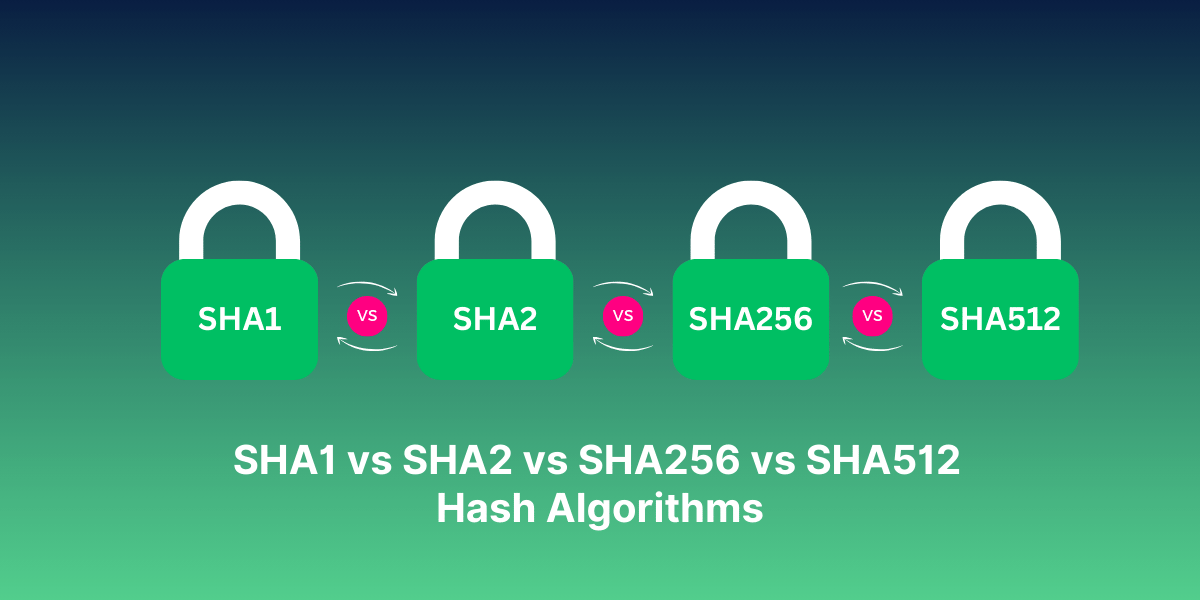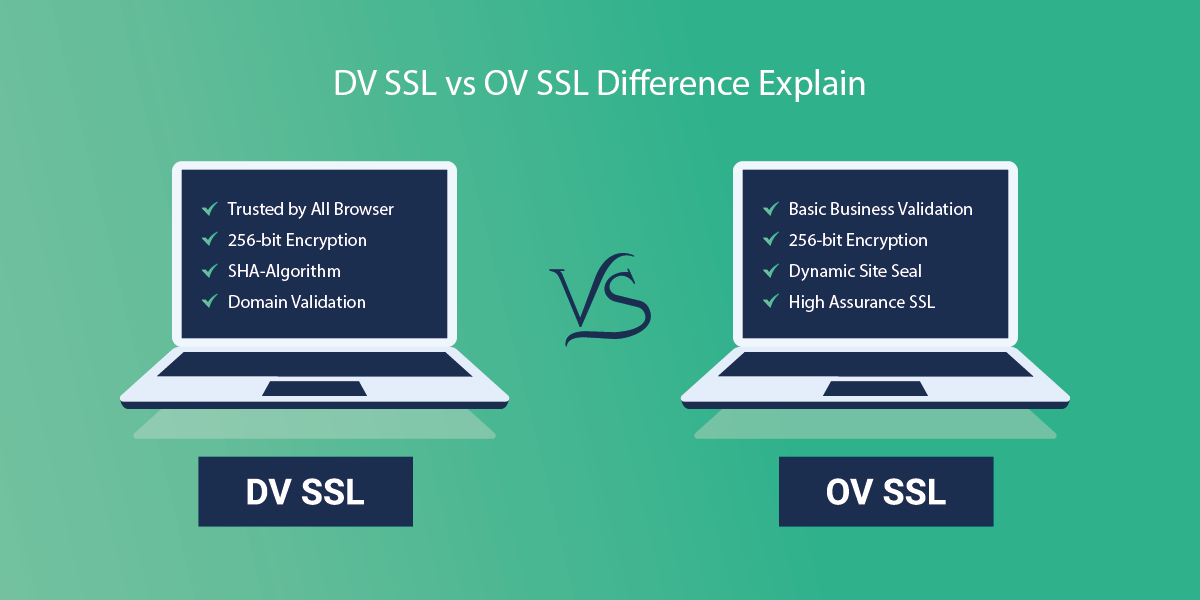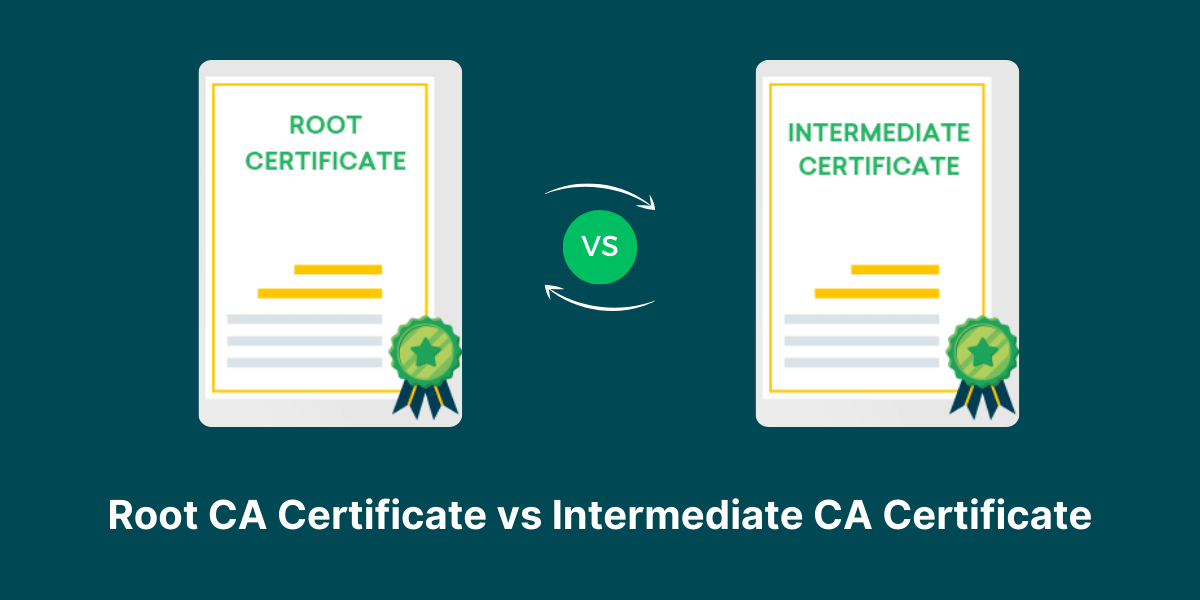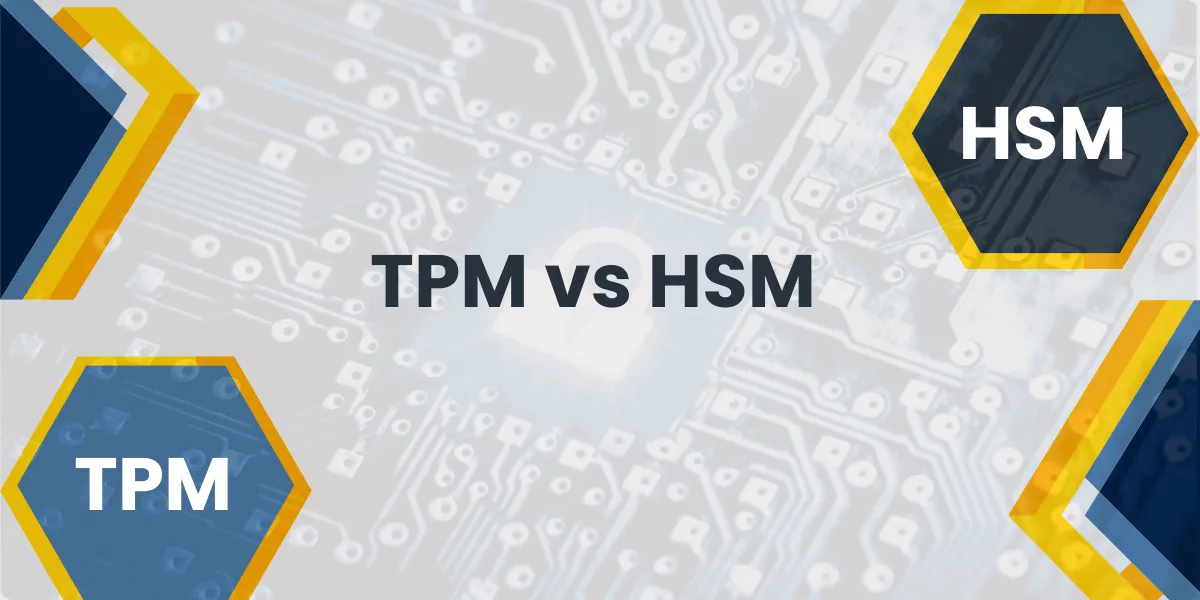What is the Difference Between SHA1, SHA2, SHA256 and SHA 512
Cryptographic hash functions like SHA1, SHA2, SHA256, and SHA512 are important tools for ensuring data integrity and security. These algorithms are used to generate fixed-length hash values or message digests that represent larger amounts of data. When it comes to comparing SHA1 vs SHA2 vs SHA256 vs SHA512, there are some key differences to understand.
SHA1 is starting to show its age with theoretical attacks identified, prompting many to transition to the stronger SHA2 algorithms. SHA2 is a family of hashes including SHA256 and SHA512 which have longer digest sizes than SHA1. SHA-256 hash algorithm generates a 256-bit hash while SHA512 generates a 512-bit hash, providing stronger protection against brute force attacks.
While all these algorithms have their place, SHA256 provides a good balance of security and performance for general purposes like SSL certificates.
Key Takeaways
- SHA1 is no longer considered secure and is being phased out in favor of SHA2 and SHA3 algorithms.
- SHA256 is the most widely used SHA2 function, offering strong security with reasonable performance.
- SHA512 offers higher security but is slower than SHA256. It is best for applications requiring extremely high collision resistance, such as digital signatures.
- SHA224 and SHA384 are truncated versions of SHA256 and SHA512, respectively, offering a balance of security and performance.
- The US government has approved all SHA2 and SHA3 algorithms for use in protecting sensitive, unclassified data.
- SHA3 is the latest standard, but adoption is still limited as the SHA2 family is still considered secure.
What is a Cryptographic Hash Function?
A cryptographic hash function is a mathematical algorithm that maps data of arbitrary size to a fixed-length string of characters called a hash value. It is a one-way function, meaning the original data cannot be derived from the hash value.
Hash functions have various uses in information security applications:
- Data integrity: Hash values represent the original data. If the data is altered, the hash value changes indicating tampering.
- Authentication: Hash values are unique representations of data like files, messages, or digital signatures. They authenticate that the data has not changed.
- Fingerprinting: Hash functions generate unique identifiers of fixed length for variable-sized input data.
Ideal properties of cryptographic hash functions:
- One-way: Infeasible to determine original input from hash
- Deterministic: The same input always generates the same hash.
- Fast computation: Fast enough for the intended application
- Preimage resistance: It is hard to find an input that produces a given hash
- Collision resistance: It is hard to find two inputs generating the same hash.
What is SHA1 and SHA2?
SHA1 and SHA2 are standardized cryptographic hash function designs published by the National Institute of Standards and Technology (NIST) as US federal standards.
SHA1
- Published in 1995.
- Generates a 160-bit (20-byte) hash value.
- Processes input in 512-bit blocks.
- Widely used in the past for digital certificates and digital signatures.
- Susceptible to collision attacks. It should not be used for sensitive applications.
SHA2 Family
- Published in 2001 as a stronger alternative to SHA1.
- The NSA designed them to protect sensitive government information.
- Exists in several variants with different digest sizes: SHA224, SHA256, SHA384, SHA512.
- All variants use the same core algorithm but differ in the following:
- Message block size
- Word size
- Number of rounds executed
- It is still considered secure, though SHA3 is the latest standard.
Comparison of SHA224, SHA256, SHA384 and SHA512
The four SHA2 functions are very similar in design but have differences in the security level and performance:
|
Algorithm |
Digest Size |
Block Size |
Word Size |
Rounds |
Comparative Security |
Speed |
|
SHA224 |
224 bits |
512 bits |
32 bits |
64 |
Fairly Secure |
Fast |
|
SHA256 |
256 bits |
512 bits |
32 bits |
64 |
Very Secure |
Fast |
|
SHA384 |
384 bits |
1024 bits |
64 bits |
80 |
Extremely Secure |
Moderate |
|
SHA512 |
512 bits |
1024 bits |
64 bits |
80 |
Extremely Secure |
Moderate |
Key Differences
- Digest size: Length of the hash value in bits. The larger size provides greater security.
- Block size: Amount of data processed in each round. A larger size increases collision resistance.
- Word size: Size of internal data units. A larger size means more security.
- Rounds: Number of repeated operations. More rounds enhance cryptographic strength.
Security Comparison
- SHA224: Provides adequate security for most applications.
- SHA256: Offers excellent security, suitable for digital certificates and signatures.
- SHA384: Very high-security margin for sensitive government applications.
- SHA512: Maximum security of SHA2 family, ideal for highly critical data.
Performance Comparison
- SHA224 and SHA256 are significantly faster than SHA384 and SHA512.
- On a typical CPU, SHA256 is about 35-50% faster than SHA512.
- For most applications, SHA256 offers the best balance of speed and security.
- SHA512 is best suited where ultimate collision resistance is needed despite slower speed.
SHA256 Explained
SHA256 is by far the most widely used SHA2 function.
Here is an overview of how SHA256 works:
- Processing: Operates on 512-bit message blocks and processes data in 32-bit words.
- Initialization: Begins with eight 32-bit hash values pre-defined in the standard. These initialize the hash state.
- Compression: Each 512-bit message block is compressed into a new 256-bit hash value using bitwise operations, modular addition, and logical shifts.
- Output: After processing all blocks in the message, the final hash state is output as a 256-bit (32-byte) hash value.
- Iterations: The compression function is repeated 64 times for each block to enhance security. More iterations increase collision resistance.
SHA256 is highly optimized for 32-bit CPU architectures. It was designed for fast performance on 32-bit processors while still providing strong security.
Why is SHA1 Considered Insecure?
SHA1 served reliably for many years. But in the 2000s, theoretical weaknesses were discovered:
- Mathematical attacks showed SHA1 had weaker collision resistance than expected.
- Researchers found techniques to detect ‘disturbances’ when hash values were computed, which could aid collision attacks.
- In 2017, the first public collision attack against SHA1 was demonstrated. Two different PDF files with the same SHA1 hash were created.
Though real-world attacks were unproven, these weaknesses caused concern about relying on SHA1 for critical security applications like SSL/TLS certificates.
To avoid risks, software companies and certificate authorities have transitioned to stronger SHA2 and SHA3 algorithms. NIST formally deprecated the use of SHA1 in 2011.
Comparison of SHA256 and SHA3-256
SHA3 is the latest hash function standard published by NIST in 2015 after a long selection process. Like SHA2, it offers variants with different digest sizes.
SHA3 differs substantially from SHA2 in its underlying algorithm. It uses a ‘sponge construction’ and not the Merkle-Damgård structure used by SHA1 and SHA2.
|
Parameter |
SHA256 |
SHA3-256 |
|
Standard |
SHA2 |
SHA3 |
|
Design |
Merkle-Damgård |
Sponge construction |
|
Security |
Very high |
Very high |
|
Speed |
Very fast |
Moderate |
|
Digest size |
256 bits |
256 bits |
|
Block size |
512 bits |
1088 bits |
SHA3 provides enhanced security against cryptographic attacks. However, so far, SHA2 has stood the test of time with no practical breaks, so SHA3 adoption has been slow. Currently, SHA256 remains the popular choice, though SHA3 may eventually replace it.
Final Words
In summary, SHA1, SHA2, SHA256 and SHA512 are important cryptographic hash functions used for verifying data integrity and security. SHA1 is starting to show its age against potential attacks, prompting a transition to the stronger SHA2 algorithms.
SHA256 provides a 256-bit hash while SHA512 provides a 512-bit hash, giving better protection compared to SHA1’s 160-bit hash. When evaluating which algorithm to use, factors like digest size, security, speed and purpose need to be considered.
For most general use cases today, SHA256 hits a sweet spot between security and performance. But for highly sensitive data, SHA512 may be preferred for its larger digest size and resilience against brute force attacks.
FAQs about SHA Hash Functions
Is SHA256 better than SHA1?
Yes, SHA256 is considerably stronger than SHA1 in terms of security. SHA1 has demonstrated vulnerabilities against collision attacks, while SHA256 remains cryptographically solid. This is why SHA256 is now recommended over SHA1.
Is SHA256 safe for passwords?
SHA256 is an excellent choice for securely storing password hashes. Its fast performance allows computing to hashes rapidly. And its collision resistance prevents finding or reverse engineering passwords from their hashes.
What is the strongest SHA algorithm?
SHA512 is the most secure SHA2 algorithm, providing the highest collision resistance. Its 512-bit hash makes it unsuitable for brute-force attacks. SHA384 is also highly secure for sensitive applications needing 384-bit hashes.
Is SHA512 better than SHA256?
SHA512 is more secure than SHA256 but much slower. SHA256 is fast on 32-bit CPUs, while SHA512 performs better on 64-bit CPUs. For most applications today, SHA256 provides sufficient security at a much higher speed. However, SHA512 is recommended for applications requiring extremely high collision resistance for data signatures or cryptography.
Is SHA256 quantum resistant?
No, SHA256 is not considered quantum resistant. It belongs to a class of algorithms called Merkle-Damgård constructs, which are vulnerable to quantum cryptanalysis attacks. This potential weakness is not currently exploitable with existing quantum computers, but future larger quantum computers may be able to break SHA256 and SHA512 security.
What will replace SHA256?
At present, SHA256 can be replaced as it provides adequate security for most applications. However, for future quantum resistance, NIST has initiated a process for standardizing new quantum-safe cryptographic algorithms. Leading candidates like quantum-secure hash algorithms may eventually replace SHA256 and SHA512.
How is SHA256 used?
Some major uses of SHA256 include:
- Data and file integrity verification using SHA256 checksums
- Password hashing for secure password storage
- HMAC authentication of messages and network packets
- Bitcoin and blockchain mining: SHA256 is used in Bitcoin’s proof of work
- Digital signatures and certificate signing to ensure authenticity
SHA256 provides a good balance of speed, security, and cryptographic strength for these digital security applications.
What is the input limit for SHA256?
SHA256 was designed to work with inputs of any practical size. There is no theoretical limit to the length of data that can be hashed using SHA256. The input data is split into 512-bit chunks and processed iteratively, allowing SHA256 to hash files, messages, or data of essentially unlimited length.

Priya Mervana
 Verified Web Security Experts
Verified Web Security Experts
Priya Mervana is working at SSLInsights.com as a web security expert with over 10 years of experience writing about encryption, SSL certificates, and online privacy. She aims to make complex security topics easily understandable for everyday internet users.



